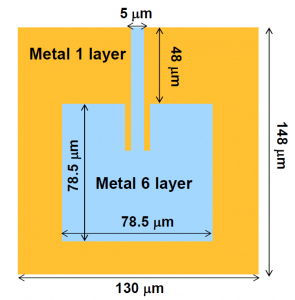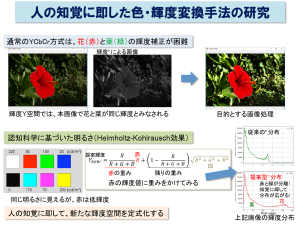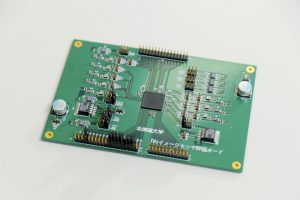- HOME
- Wow! Cool Laboratory [Researcher Introduction]
- Masayuki Ikebe
Wow! Cool Laboratory [Researcher Introduction]

Division of Electronics for Informatics,
Research Group of Integrated Systems Engineering,
Laboratory for Integrated NanoSystems
Field of research: intelligent information science, applied physicality/crystal engineering, electronic devices/equipment, telecommunication/network engineering
Research themes: image sensors, image processing
E-mail: ikebe[a]ist.hokudai.ac.jp
Development of broader needs from devices to circuits and algorisms
Pioneering the next generation of integrated nanosystems
Development of terahertz image sensors that can penetrate plastics, cloth and paper
The Laboratory for Integrated NanoSystems, to which Associate Professor Masayuki Ikebe belongs, plays a role in the Laboratories for Advanced LSI Engineering (LAISIE), a laboratory complex comprised of the Laboratory for Integrated Digital System Architecture and the Laboratory for Integrated NanoSystems at the Division of Electronics for Informatics of the Graduate School of Information Science and Technology, where ground-breaking research is conducted with a view to develop not only hardware and software but also bioscience.
Associate Professor Ikebe is now engaged in research on terahertz image sensors. Terahertz light occupies a middle ground between radio waves and light waves (100 GHz – 10 THz), and has attracted attention for its broad range of application possibilities as it can penetrate materials such as plastics, fibers and paper. Associate Professor Ikebe is working on the development of devices to generate and detect terahertz light and the construction of a verification environment.
“Our laboratory is working on the development of a chip focused on an antenna array system (note 1). We have developed a sensor array circuit connected with an antenna and a transistor and have incorporated an antenna receiving terahertz light and an analog-digital conversion system into one chip.”
The developed chip is based on a process known as CMOS (Complementary MOS), with which resolution can be changed using the laboratory’s super-resolution technique. The chip operates on lower power than conventional detecting devices and can be produced at a relatively low cost. As a result, its practical use is being considered in the security and other fields.
“The antenna type is an attractive prospect because it can record approximately 1,000 frames per second. The substrate we are now developing is equipped with one AD converter for each pixel and can output all images as digital data. A low-resolution image can be made into a high-resolution image by recording 1,000 frames per second while conducting gradual displacement at the micron scale and skillfully combining the frames. It’s a project we are determined to see through.”
Terahertz light is characterized by fingerprint spectra, enabling users to identify a substance by detecting the absorption spectrum unique to the substance. It also enables users to clarify the situation of liquid molecules, providing diverse application possibilities.
Proposal of an easy-to-operate luminance correction technique through the recognition of color and brightness based on human perception
Another of the laboratory’s research themes is an intelligent information processing system that features even emotion, which is research on an intuitive interface that can simultaneously correct overall and partial images of large-volume graphics data. The laboratory has been engaged in this research for several years and proposed a technique to correct images without causing black defects and halation (note 2) in 2016. The laboratory has since extended the technique to develop a color/luminance conversion technique (note 3).
“For images expressed using the YCbCr system (a system to express color in JPEG), it is difficult for an application such as Photoshop to separately correct the luminance of red and green areas because red is regarded as having the same luminance as green. In this research, we have altered the luminance value of red based on the brightness perceived by humans (Helmholtz-Kohlrausch effect) (cognitive science) and formulated a new luminance space in line with the brightness of color.”
In the fields where images and videos are used, high expectations are placed on a technique that enables the expression of the same image as humans actually see and the easy correction of images.
“For example, in the medical field, the technique can be used to make X-ray images clear and correct the reflection and shine of endoscopic images. It will also be possible to analyze surface image data collected by a drone with visible, infrared and terahertz light sensors.”
Associate Professor Ikebe considers that human-friendly images are also easily viewable for artificial intelligence (AI), and expects that the technology can be used for the processing and correction of images to be input in AI. He plans to cooperate with private companies to advance research aimed at practical use.





